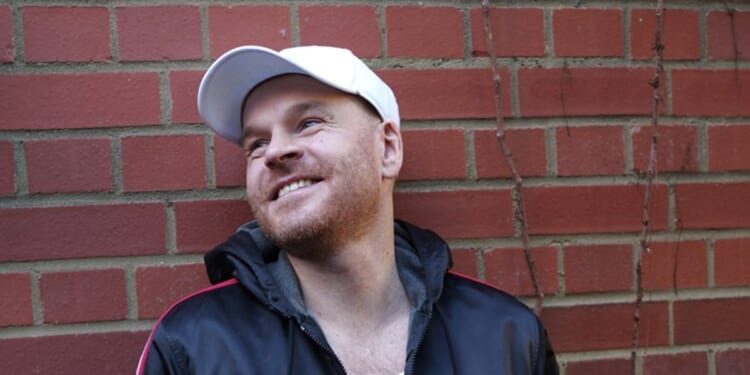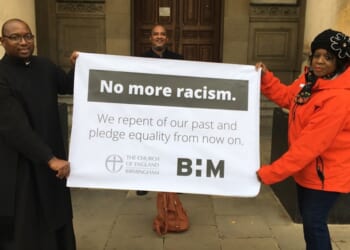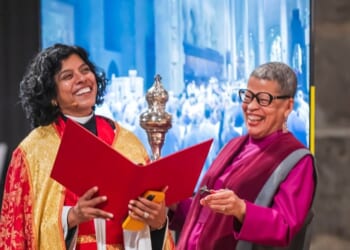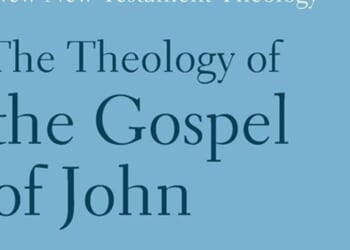WORLD AIDS DAY falls annually on 1 December. As an elected member of the General Synod, I reflect at this time on my own identity as a gay Christian man living with HIV. It is a time for remembering those whom we have lost to AIDS, but also for thinking about how the Church can confront the challenges posed by HIV nationally and throughout the Anglican Communion.
In 2024, there were an estimated 113,500 people living with HIV in the UK. The majority of new diagnoses were among straight women and men, and they disproportionately affected people of global-majority heritage. In 2024, there were 26.3 million people living with HIV in the World Health Organization African Region, and a total of 40.8 million globally. About 40 per cent of all people living with HIV in the UK are in London. These figures are taken from the Terrence Higgins Trust and UNAIDS websites.
Surprisingly, the last time that the Church of England commissioned a report or substantive policy document on HIV was in 2004, accompanied by a Synod debate. In 2002, the Anglican Primates met in Canterbury, where a statement was issued, which emphasised: “We now wish to make it clear that HIV/AIDS is not a punishment from God.”
On social media, in 2025, however, I am still told by various people that my HIV is a punishment from God.
THE 2004 report was ambitious in scope: a 57-page Synod paper looking at HIV across the Anglican Communion. It did not discuss HIV in England at all. Then, as now, there remains a moral panic about HIV in some faith communities, which potentially triggers speculation that HIV may have been acquired through pre-marital, extramarital, or queer sex, whereas the focus should be on supporting the individual without judgement.
There may also have been a reluctance to address the English context in 2004, because, back then, more than half of the diagnoses were among gay or bisexual men. This has created a spiritual and pastoral vacuum, as senior clergy stay comparatively quiet on the issue.
In terms of policy, the House of Bishops still refers to the ethos and recommendations of the 2004 report as guiding best practice in our churches today. This was so when I asked a question in the Synod in February 2022. Most English clergy below the age of 45 are probably unaware, however, that the 2004 document exists. It is not available online, although it can be obtained from the Lambeth Palace Library archives and is on some central databases.
Reflecting the medical knowledge of the time, the report discusses treatment and prevention separately, whereas now it is recognised that treatment is a form of prevention. Someone who is living with HIV and is on treatment cannot pass the virus on. This Undetectable equals Untransmittable (U=U) knowledge has been at the forefront of many HIV campaigns since 2018.
Antiretroviral medications, now even more advanced than in 2004, taken as a daily single pill or even injectable, mean that people living with HIV, if they have access to them, besides not passing the virus on — during pregnancy as well as at other times — can expect a normal lifespan.
WHAT should a new Church of England report include? It could discuss HIV in the Anglican Communion. In 2024, a UNAIDS report emphasised the central part that churches play globally in HIV awareness, testing, and care. It noted that, in some African countries, 30 to 70 per cent of all health-care services were provided by faith-based organisations.
Any study also needs to discuss HIV as it is experienced by English Christians in Church of England churches. Perhaps English churches can learn from what has been taking place in the Anglican Communion. A new study would be an opportunity to emphasise the part that English churches could play in testing and challenging stigma and to cite examples of lived experience from our congregations.
There has been high-profile activity in English churches in relation to HIV. This includes: the Revd Jide Macaulay’s participation in a series of Terrence Higgins Trust campaigns (Features, 26 November 2021); Southwark Cathedral’s HIV/AIDS chapel (Comment, 24 June 2022); Oasis Church, in Waterloo; St Anne’s, Soho; St Bride’s, Liverpool; and the work of Catholics for AIDS Prevention and Support, alongside numerous other examples.
In 2004, the Church of England was participating at the highest level in the global response to HIV. For World AIDS Day 2025, I would like the Church of England to consider having a clear national, as well as international, policy on HIV.
Philip Baldwin is a General Synod member for London diocese.

















